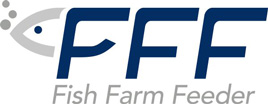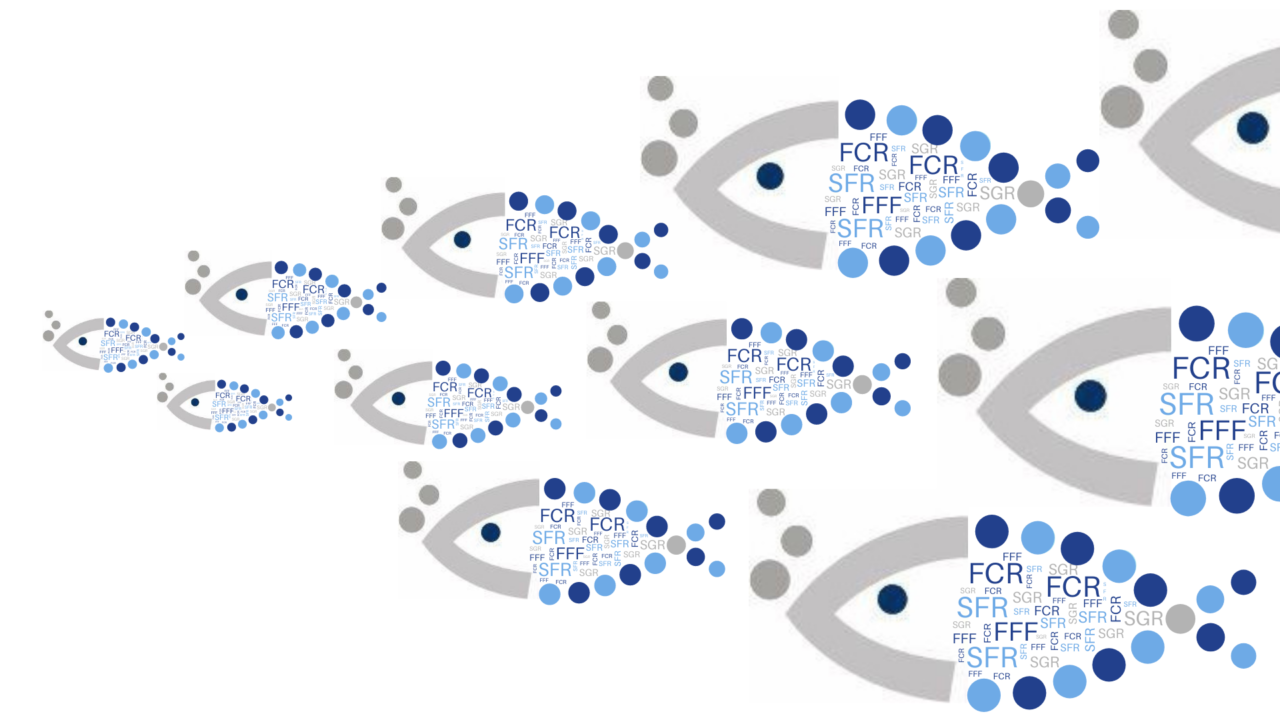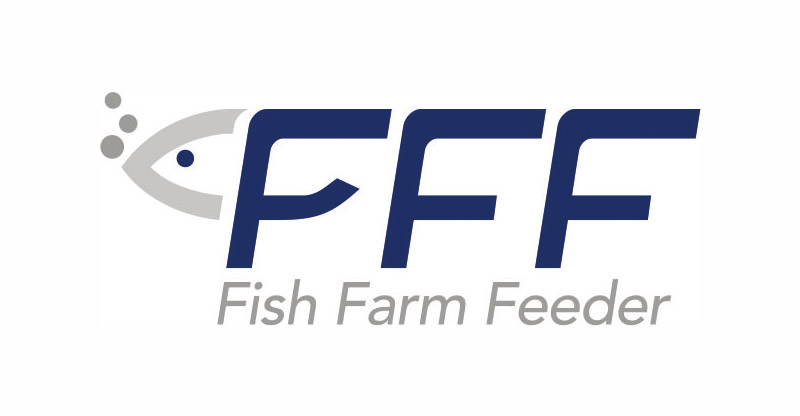SFR | FCR | SGR | GF3 | FCE | BWG | RGR | PER | FI:FO | ADG | B-FCR | E-FCR | K
Therefore we have selected the abbreviations and terms that are usually used by people dedicated to aquaculture and devided the terms based on categories such as conversion, growth, efficiency, etc.
Most used parameters and terms in aquaculture
TERMS RELATED WITH CONVERSION
FCR: Feed Conversion Rate
FCR represents kilograms of feed needed to produce one kilogram of fish.
- FCR= Feed given / Animal weight gain
SGR: Specific Growth Rate
SFR is a coefficient that measures the percentage increase in fish weight per day.
SGR=(Ln(Wt)-Ln(W0))*100/t(d)
- W0[g]= the weight in grams at the beginning of the period
- Wt [g]= the weight in grams at the end of the period
- t[d]= period, expressed in number of days
- Ln = natural logarithm
SFR: Specific Feeding Rate
SFR corresponds to the amount of food eaten per day and expressed as a percentage of the fish’s body weight.
RGR: Relative Growth Rate
RGR (%) = Final weight – initial weight / initial weight
PER: Protein Efficiency Ratio
PER (%) = Increase in biomass in the tank / total protein ingested
B-FCR: Biological Feed Conversion Rate
Takes into account feed used, and all Biomass generated, including lost Biomass.
B-FCR = Amount of feed (kg) / (Biomass2 – Biomass1 + Lost Biomass)
- Biomass1= Biomass at the beginning of the period
- Biomass2 = Biomass at the end of the period
- Lost Biomass= Biomass lost during the period (mortality, elimination)
E-FCR: Economical Feed Conversion Rate
Takes into account feed used, and all Biomass generated, excluding lost Biomass.
E-FCR = Amount of feed (kg) / (Biomass2 – Biomass1 )
- Biomass1= Biomass at the beginning of the period
- Biomass2 = Biomass at the end of the period
TERMS RELATED WITH GROWTH
GF3: Thermal Growth Coefficient
Measure of daily growth in a given period that takes into account temperature.
GF3 = [(W2(1/3) – W1(1/3) ) / ºD ] x 1000
- W2 = weight (g) at time 2 (end of period)
- W1 = weight (g) at time 1 (beginning of period)
- ºD = Degree-days, sum of daily temperatures in °C between t1 and t2 (or duration in days x average temperature in period)
ADG: Average Daily Gain
Growth rate
Average daily gain (g) = body weight gain (g) / number of days
BWG: Body Weight Gain
BWG (g) = mean final weight – mean initial weight
TERMS RELATED WITH EFFICIENCY
FCE: Feed Conversion Efficiency
The efficiency of a feed is normally measured by the amount necessary to produce a unit weight of fish.
FCE= Wt of food presented / Wt of animal produced
- Wt = means the weight in a certain period
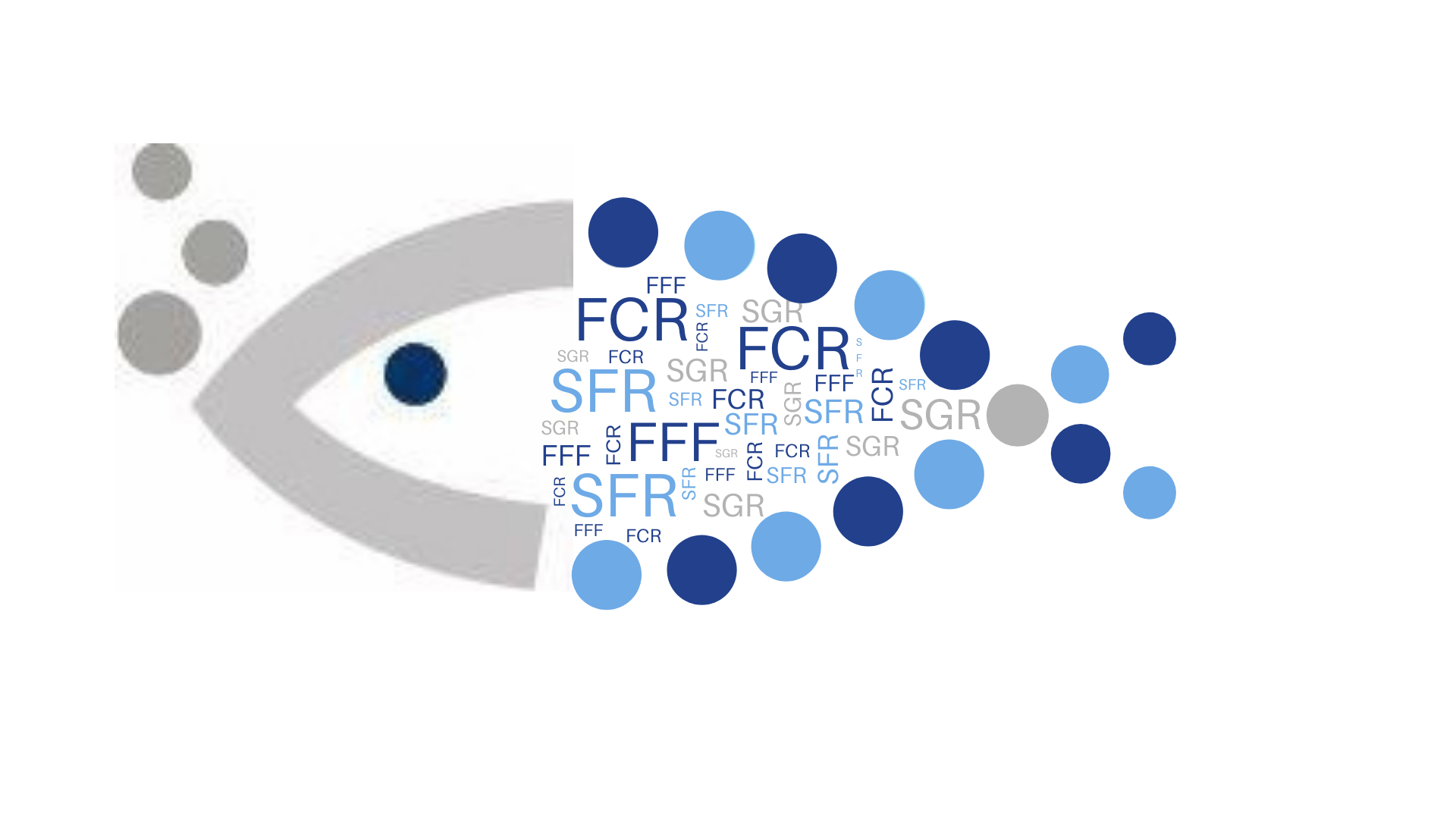
FI:FO: Fish In Fish Out
Amount of wild fish needed to produce 1 kg of aquaculture fish
FI:FO (%) = FCR x (% fish meal + % fish oil in feed)
K: Condition factor
Condition factor (K) is an indicator of the leanness/fattiness of a fish, which is generally regarded as an indicator of fish´s health. If K is less than 1, fish are considered thin or poorly nourished, for higher than 1 levels, the relation of K to fattiness is usually species dependent.
K = [(W x 100) / L3]
- K = Condition factor
- W = weight (g)
- L = length (cm)
OTHER TERMS
PG:
PG (g) = Final weight – initial weight
Survival Rate
Survival rate % = number of surviving animals at the end of the production cycle / total number of animals at the beginning of the cycle * 100
Stocking Density
Total fish Biomass per unit of tank volume
D = W / V
- D = Stocking density (kg/m3)
- W = Biomass (kg)
- V = volume (m3)
Fork Length
Fork length (also referred to as length or standard length) is the length (cm) of a fish from the tip of its nose to the middle of the tail fork.
If you plan to upgrade your farm or build a new one, do not hesitate to contact us. We provide tailor-made feeding systems for land-based, RAS, river and/or lake aquaculture for more than a decade.
